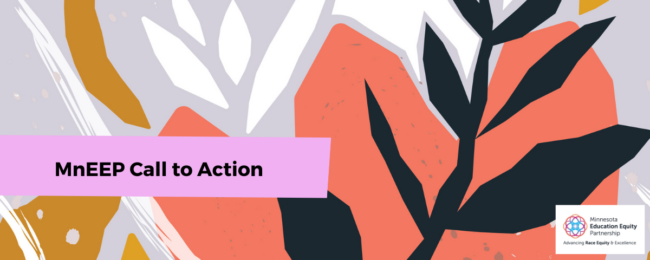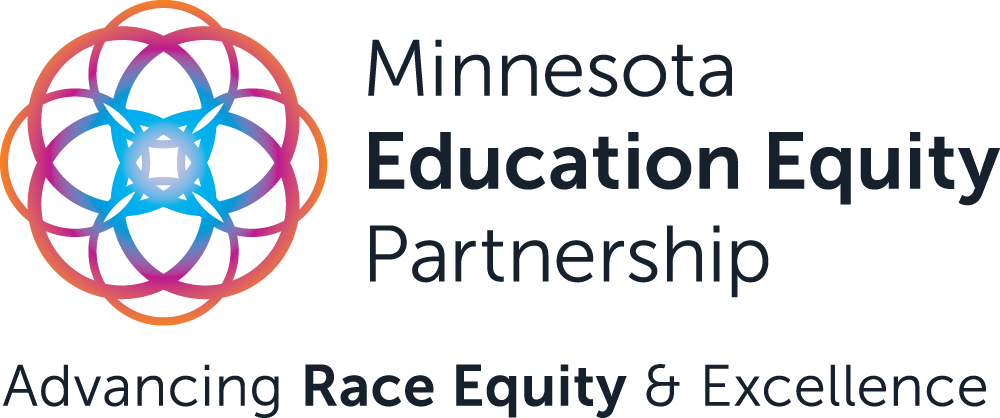
MnEEP Announcement: Minnesota lawmakers must move on higher-ed race equity bills they left on the table
During the 2022 legislative session, Minnesota House lawmakers passed a bill that would allow for multiple measures to determine student placement in developmental education courses in Minnesota’s higher ed institutions.
This was a critical advancement for racial equity in Minnesota’s higher education systems, where students of color and Indigenous students (POCI) are disproportionately placed in developmental education courses that do not count toward a college degree or credential.
In May, after negotiations and agreement with the Senate, the House passed the HF 3872 bill. It included allowing for the use of multiple measures—instead of a single, outdated test such as the ACCUPLACER — to determine student placement in developmental education courses.
However, the Senate left it on the table. The agreement was never taken up by the Senate for a final vote before the legislative session ended.
This essential bill was celebrated for removing one of the many systemic barriers to postsecondary education for Minnesota’s students of color and Indigenous students. It had been informed by critical Minnesota Education Equity Partnership (MnEEP) research and two years of expert analysis and input from MnEEP’s multiracial College Race Equity Advocacy Advisory Council (CREEAC).
Now as new bills are set into motion and colleges are starting a new year, it’s crucial that lawmakers finalize this agreed upon provision as well as continue to move other bills that advance racial equity in Minnesota’s higher education systems.
Why now?
For too long, traditional approaches for determining college “readiness”—based on a single ACCUPLACER test score—at Minnesota’s colleges and universities have long served as a gatekeeper denying POCI students equitable access to Minnesota’s colleges and universities.
What’s more, the ACCUPLACER is not aligned to the Minnesota State K-12 Standards nor to the Minnesota Comprehensive Assessment scores for high school. This means there is no correlation between what students are learning in the classroom and what’s on the ACCUPLACER test.
Mounting evidence shows that multiple-measures placement—which relies on several key predictors for college course placement, including a student’s ACT, SAT, and high school Minnesota Comprehensive Assessment test scores—reduces the cost of college for POCI students and increases their likelihood of receiving a college credential.
By law, the Minnesota legislature has set an Education Attainment goal for 2025 that 70 percent of Minnesota adults ages 25-44 will have a postsecondary certificate or degree.
To get anywhere near that, we need to take bold action now to undo systemic inequities in Minnesota higher education systems and design models to increase college access and completion for Minnesota’s growing number of POCI students.
Your commitment matters
While not making it into final law, this year’s essential House legislation to require multiple measures for determining developmental education placement would not have been possible without MnEEP partnerships, including with the Minnesota Office of Higher Education, Minnesota Private College Council, and the University of Minnesota.
It was because of these partnerships MnEEP was able to influence lawmakers, and other key stakeholders, using essential research, insight, and best practices from race equity leaders at Minnesota’s colleges and universities serving on MnEEP’s College Race Equity Advocacy Advisory Council (CREEAC). The CREAAC is a state-wide, multiracial advocacy group working to direct and advocate for new policies to advance race equity in Minnesota’s higher education system.
This team introduced state legislative higher-education committees to numerous evidence-based recommendations for building a more racially just higher education system, many of which came out of MnEEP’s 2020 report, Reducing Racial Disparities in College Completion.
MnEEP’s CREAAC advanced this work through several public meetings and learning sessions over two years, which culminated in a convening in June of 2021 to share race equity research, best practices, and evidence-based models with leadership, faculty, students, and staff across Minnesota’s colleges and universities.
Through those meetings, CREAAC members, along with the support of the Good Work Group and Design for the Arts, built an essential, online Race Equity in Higher Education Toolkit for building race equity advocacy, deepening connections, and sharing best practices across Minnesota’s higher ed institutions.
Take Action
This work will continue to grow and evolve as MnEEP works alongside CREAAC, higher-ed partners, and race equity leaders to transform Minnesota’s higher-ed system to be racially just, culturally responsive, and accessible for Minnesota’s students of color and American Indian students.
We look forward to continuing to work alongside our partners to build a more racially equitable higher-ed system in Minnesota.
And we urge lawmakers to continue on their promise to advance essential legislation this year to support students of color and Indigenous students.
How can you get involved and help us advance a movement for racial equity?
- Sign on to the MnEEP Race Equity in Higher Ed Compact and join us in building a more racially just higher-ed system.
- Check out Race Equity in Higher Education Toolkit and share your stories, experiences, and best practices with us!
- Sign up to receive news and alerts about how you can become part of our movement to advance race equity in higher education.
- Reach out to Ikram Mohamud, MnEEP’s College Racial Equity Initiative Coordinator, to learn more about CREAAC by email at imohamud@mneep.org.

